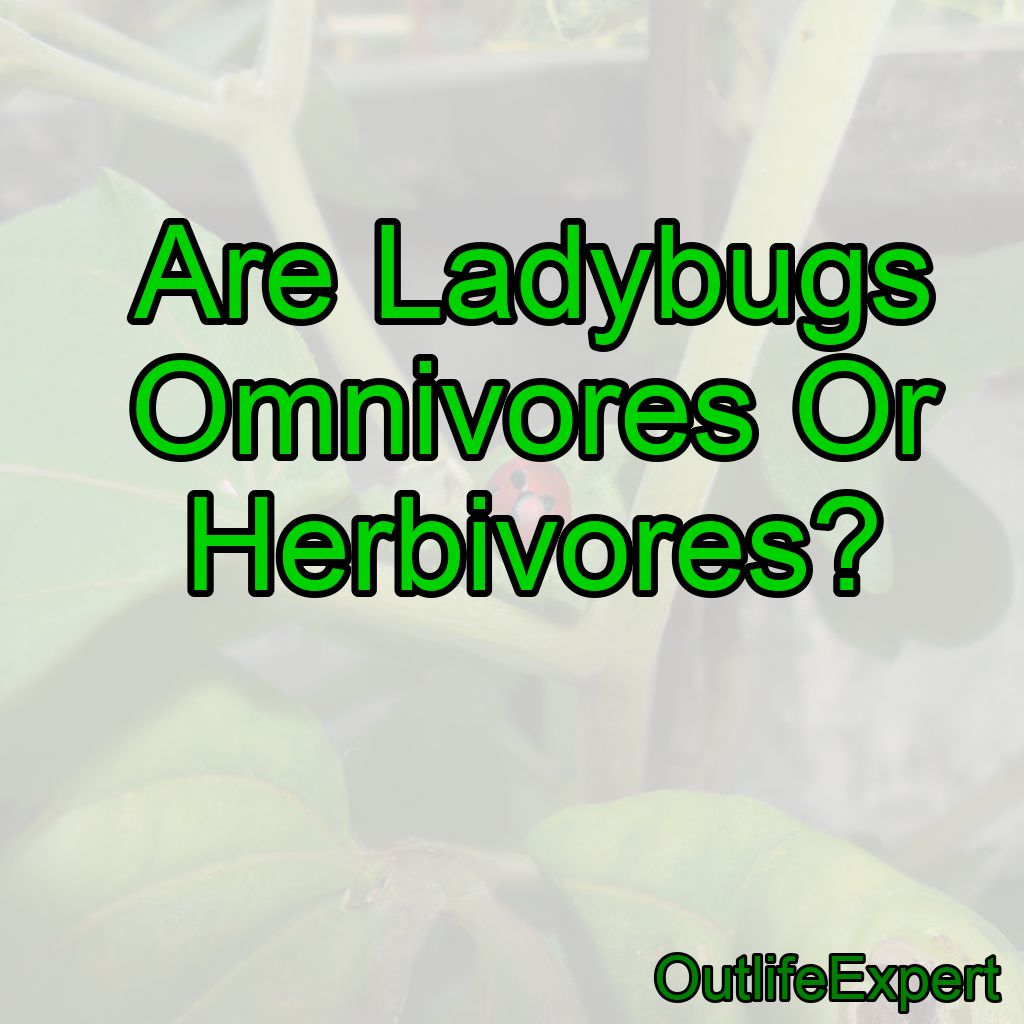There is a common misconception that ladybugs are herbivores. However, the truth is, ladybugs are actually omnivores! Let’s dive into the fascinating world of ladybugs and explore their diet, role in the ecosystem, and how they can benefit our gardens and agricultural lands.
Contents
Ladybug Diet: A Mix of Plants and Prey
Plant Consumption
While ladybugs are widely known for their carnivorous appetites, they also consume plants. In fact, they are known to eat a variety of plant parts, including leaves, stems, and pollen. This plant consumption is more common in their larval stage, when they require a high amount of nutrients to develop into adults. As they mature, however, their diet shifts more towards insects.
Predatory Nature
One of the main reasons ladybugs are considered beneficial insects is due to their predatory nature. Ladybugs, both in their larval and adult stages, are voracious eaters of soft-bodied insects, such as aphids, mites, and scale insects. These pests can cause significant damage to crops and plants, making ladybugs an important ally for gardeners and farmers.
The Role of Ladybugs in the Ecosystem
Natural Pest Control
Ladybugs are highly effective at controlling pest populations in gardens and agricultural lands. By consuming large numbers of aphids and other pests, ladybugs help to reduce the need for chemical pesticides, which can have detrimental effects on the environment and human health.
Pollinators
While they are not as well-known for their pollination abilities as bees or butterflies, ladybugs do play a role in pollination. As they move from plant to plant in search of food, they inadvertently transfer pollen, helping plants to reproduce.
Ladybug Lifespan and Reproduction
Four Stages of Life
Ladybugs undergo complete metamorphosis, which means they have four distinct stages in their life cycle: egg, larva, pupa, and adult. The entire process usually takes about 4-7 weeks, depending on the species and environmental conditions.
Reproduction
Reproduction in ladybugs typically occurs in the spring and summer months. After mating, the female lays her eggs on the underside of leaves, often near colonies of aphids or other prey. This ensures that the hatching larvae will have an immediate food source.
Attracting Ladybugs to Your Garden
Plant Selection
One of the best ways to attract ladybugs to your garden is by planting a variety of flowers and herbs that provide food and shelter for them. Some popular choices include marigolds, dill, fennel, and yarrow.
Avoiding Pesticides
As mentioned earlier, ladybugs are sensitive to chemical pesticides. Avoiding the use of these chemicals in your garden will create a more hospitable environment for ladybugs and other beneficial insects.
Identifying Different Ladybug Species
Color Variations
While the classic red and black spotted ladybug is the most recognized, there are actually over 5,000 species of ladybugs worldwide, and they come in a variety of colors and patterns. Some are yellow, orange, or even black with red spots.
Size Differences
Ladybugs also vary in size, with some species measuring less than 1mm in length, while others can reach up to 10mm. In general, ladybugs found in gardens and agricultural lands are on the smaller side, usually between 1-5mm.
Are There Any Dangers Associated with Ladybugs?
Defensive Mechanisms
Although ladybugs are generally considered harmless to humans, they do have some defensive mechanisms. When threatened, they can release a foul-smelling fluid from their leg joints, which can cause skin irritation in some individuals.
Invasive Species
Some non-native species of ladybugs, such as the Asian lady beetle, have become invasive in certain regions. These insects can cause damage to native ecosystems and may even outcompete native ladybug species.
In conclusion, ladybugs are omnivores, consuming both plants and insects throughout their lives. As beneficial insects, they play a vital role in controlling pest populations and pollinating plants. Attracting ladybugs to your garden can be easily achieved by planting a variety of flowers and herbs and avoiding the use of chemical pesticides. While there are some risks associated with certain invasive species, ladybugs are generally considered to be harmless and helpful insects.
Here are 10 interesting facts about ladybugs:
1.Ladybugs are omnivores, consuming both plants and insects.
2. They are effectivenatural pest controlagents, preying on aphids, mites, and scale insects.
3. Ladybugs play a role inpollinationas they move from plant to plant.
4. Their life cycle includesfour distinct stages: egg, larva, pupa, and adult.
5. Female ladybugs lay their eggs on the underside of leaves, near prey colonies.
6. Attracting ladybugs to your garden can be achieved by plantingflowers and herbssuch as marigolds, dill, fennel, and yarrow.
7. There are over5,000 species of ladybugsworldwide, with varying colors and patterns.
8. Ladybugs range in size from less than 1mm to 10mm in length.
9. They havedefensive mechanisms, including releasing a foul-smelling fluid that can cause skin irritation.
10. Some non-native ladybug species, such as the Asian lady beetle, can becomeinvasiveand cause damage to native ecosystems.
FAQs
Which ladybugs are carnivores?
All ladybugs are carnivores, as they feed on small insects such as aphids, mites, and other soft-bodied insects.
Are red ladybugs carnivores?
Yes, red ladybugs are carnivores and feed on small insects and aphids.
Are there 2 types of ladybugs?
No, there are actually over 5,000 species of ladybugs, each with their own unique characteristics and markings.
What do red ladybugs eat?
Red ladybugs, like other ladybugs, primarily feed on aphids and other small insects.
What ladybugs are omnivores?
Ladybugs are not omnivores, they are actually carnivorous insects that primarily feed on aphids and other small insects.
How many ladybug types are there?
There are over 5,000 known species of ladybugs worldwide.




